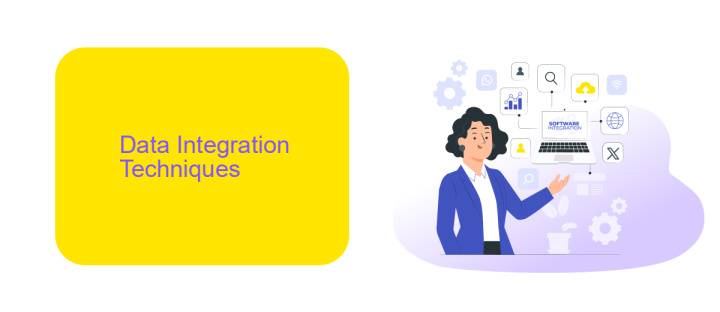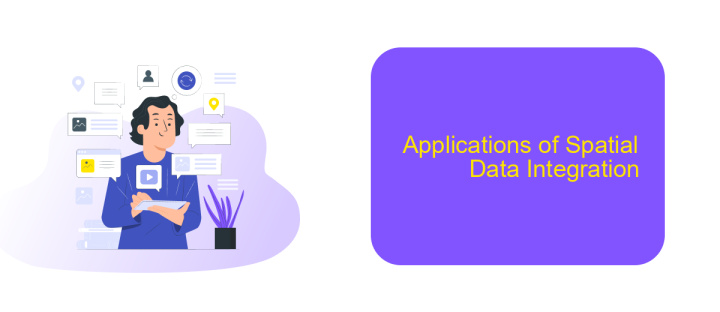Spatial Data Integration
Spatial Data Integration (SDI) is a critical process that combines spatial information from various sources to create a unified dataset. This integration enhances the accuracy and usability of geographic data, facilitating better decision-making in fields such as urban planning, environmental management, and disaster response. By merging diverse datasets, SDI enables comprehensive analysis and fosters a deeper understanding of spatial relationships.
Introduction
Spatial data integration is a crucial process in various fields such as urban planning, environmental management, and logistics. It involves combining spatial data from multiple sources to provide a unified view, facilitating better decision-making and analysis. The complexity of spatial data integration arises from the diversity of data formats, sources, and the need for accurate georeferencing.
- Data format standardization
- Geospatial data transformation
- Data quality assurance
- Integration tools and platforms
Effective spatial data integration requires robust tools and platforms. ApiX-Drive is a notable service that simplifies the integration process by providing seamless connections between various data sources. Its user-friendly interface and automation capabilities enable efficient data synchronization and transformation, ensuring high-quality and reliable spatial data integration. By leveraging such services, organizations can enhance their spatial data analysis and operational efficiency.
Data Integration Techniques

Spatial data integration involves combining data from different sources to provide a unified view. Techniques for achieving this include data transformation, data cleansing, and schema matching. Data transformation involves converting data into a common format, while data cleansing ensures the accuracy and consistency of the integrated data. Schema matching is used to align data from different sources by mapping their structures and relationships.
Modern tools and services, such as ApiX-Drive, facilitate the integration process by automating many of these tasks. ApiX-Drive allows users to connect various data sources and applications with minimal coding effort. It supports a wide range of APIs, making it easier to synchronize spatial data from multiple platforms. By leveraging such services, organizations can streamline their data integration workflows, ensuring that spatial data is accurate, consistent, and readily available for analysis and decision-making.
Challenges and Limitations

Spatial Data Integration presents several challenges and limitations that can hinder its effective implementation. One of the primary issues is the heterogeneity of data sources, which often have different formats, scales, and projections. This diversity complicates the process of merging and analyzing spatial data from various origins.
- Data Quality: Inconsistent and inaccurate data can lead to erroneous conclusions.
- Technical Complexity: Integrating spatial data requires advanced technical skills and specialized software.
- High Costs: The process can be expensive due to the need for sophisticated tools and skilled personnel.
- Data Privacy: Ensuring the privacy and security of spatial data is a significant concern.
- Interoperability: Different systems and platforms may not easily communicate with each other, complicating integration efforts.
Despite these challenges, tools like ApiX-Drive can facilitate the integration process by providing a user-friendly interface and automation capabilities. ApiX-Drive helps to streamline data flows between various systems, reducing the technical burden and improving data accuracy. By leveraging such services, organizations can mitigate some of the complexities associated with spatial data integration.
Applications of Spatial Data Integration

Spatial Data Integration plays a crucial role in various industries by enabling the seamless combination of spatial data from different sources. This integration enhances decision-making processes, offering comprehensive insights and fostering innovation. The applications of spatial data integration are vast and varied, impacting several key sectors.
One prominent application is in urban planning, where integrated spatial data helps in the efficient design and management of infrastructure. Another significant area is environmental monitoring, where spatial data integration allows for the accurate tracking of environmental changes and the assessment of their impacts. Additionally, in the field of agriculture, integrated spatial data supports precision farming techniques, optimizing crop yields and resource usage.
- Urban Planning: Improved infrastructure design and management.
- Environmental Monitoring: Accurate tracking of environmental changes.
- Agriculture: Enhanced precision farming techniques.
Services like ApiX-Drive facilitate the integration of spatial data by providing tools to connect various data sources effortlessly. These integrations enable organizations to streamline their workflows, ensuring that spatial data is accurately and efficiently utilized. As a result, industries can leverage spatial data integration to drive better outcomes and achieve greater efficiency in their operations.
- Automate the work of an online store or landing
- Empower through integration
- Don't spend money on programmers and integrators
- Save time by automating routine tasks
Conclusion
In conclusion, spatial data integration is a pivotal aspect of modern geographic information systems (GIS), allowing for the seamless combination of diverse datasets to generate comprehensive insights. The integration process enhances the accuracy and utility of spatial analyses, facilitating better decision-making in various fields such as urban planning, environmental management, and disaster response. Effective spatial data integration requires robust methodologies and tools to ensure data compatibility and integrity.
Services like ApiX-Drive play a crucial role in streamlining the integration process by providing automated solutions for connecting different data sources. By leveraging ApiX-Drive, organizations can efficiently manage and synchronize their spatial data, reducing manual effort and minimizing errors. This automation not only saves time but also enhances the reliability of the integrated datasets, ultimately leading to more informed and effective spatial analyses. As the demand for precise spatial data continues to grow, the importance of efficient integration solutions like ApiX-Drive will only become more pronounced.
FAQ
What is Spatial Data Integration?
Why is Spatial Data Integration important?
What are the common challenges in Spatial Data Integration?
How can I automate Spatial Data Integration processes?
What are the benefits of using automation tools for Spatial Data Integration?
Apix-Drive is a simple and efficient system connector that will help you automate routine tasks and optimize business processes. You can save time and money, direct these resources to more important purposes. Test ApiX-Drive and make sure that this tool will relieve your employees and after 5 minutes of settings your business will start working faster.


